Take Control of Managing Osteoarthritis (OA) Pain
Take Control of Managing Osteoarthritis(OA) Pain
Set your practice and clients up for success with these resources
Resource Overview
Watch this short video and review the infographic to strategize how to use these resources with pet owners.
Resources to Share With Pet Owners



Website
Cat OA Digital Checklist
Share this easy-to-use online tool with pet owners before their next appointment.
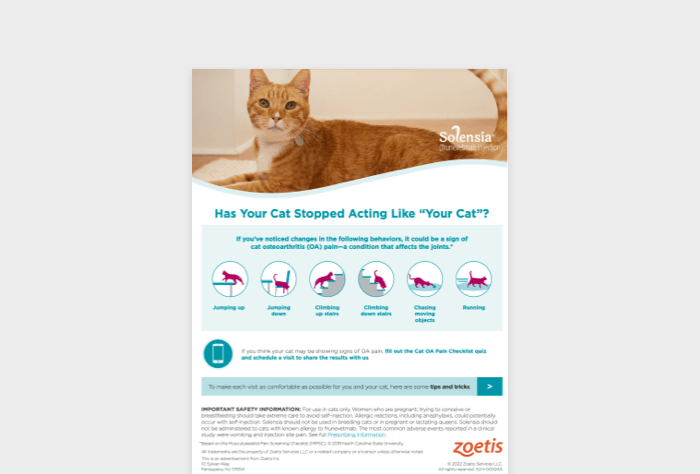


OA Pain Checklist
Reach out to pet owners before they come into your practice.
Attach the provided image to an email or follow the customizable email instructions.
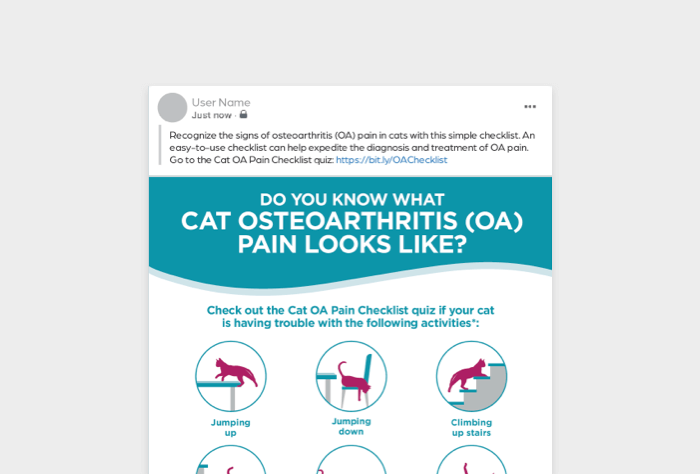


Social Media
Cat OA Pain Checklist
Help pet owners recognize the common signs of feline OA pain.
Follow the customizable post instructions to share with your clients.



Video
OA Pain Checklist Animation
Upload this animation to your practice’s website or social page to help pet owners recognize the common signs of feline OA pain.



Videos
Feline Osteoarthritis Education Series
Upload these 1 minute videos to your practice’s website or social page to help pet owners learn more about feline OA pain.
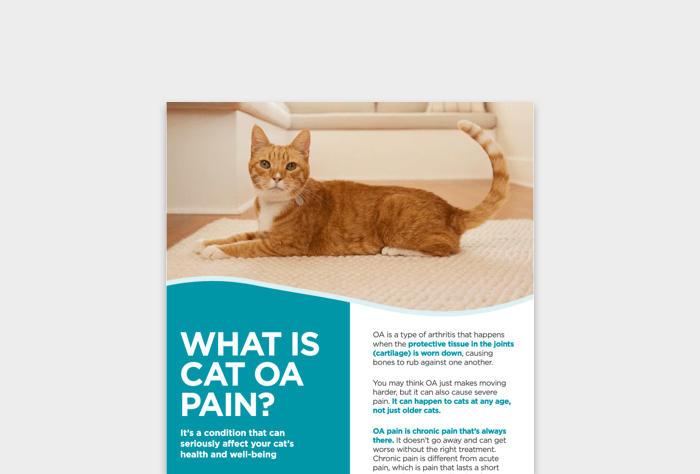


Pet Owner Brochure
What Is Cat OA Pain and Solensia?
Help cat owners understand both signs and treatment options for OA pain.
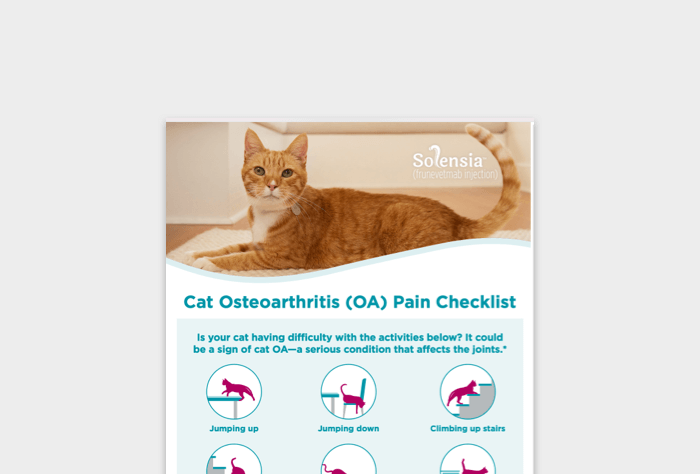


Poster
Cat OA Pain Checklist
Hang this 17” x 11” poster in your practice as an easy checklist for pet owners to use.



Handout
Cat OA Printable Checklist
Download and print this checklist to use in the waiting and exam rooms.
Resource Overview
Watch this short video and review the accompanying infographic to plan how to use these resources with pet owners.
Resources to Share With Pet Owners
On Hold Messages
Recordings
These recordings can be played on your phone lines while pet owners are on hold. They contain educational messages about feline OA pain to help prompt conversations with them.
If the prerecorded messages don’t suit your practice, you have the option to create your own version.
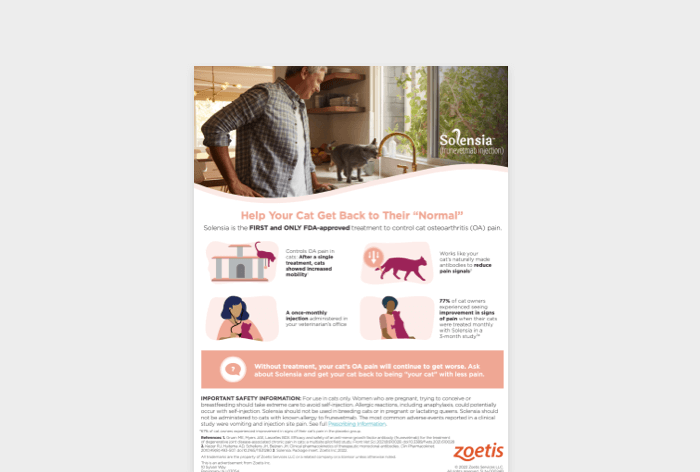


Help Your Cat Get Back to Their "Normal"
Share additional information about treating OA pain in cats.
Attach the provided image to an email or follow the customizable email instructions.
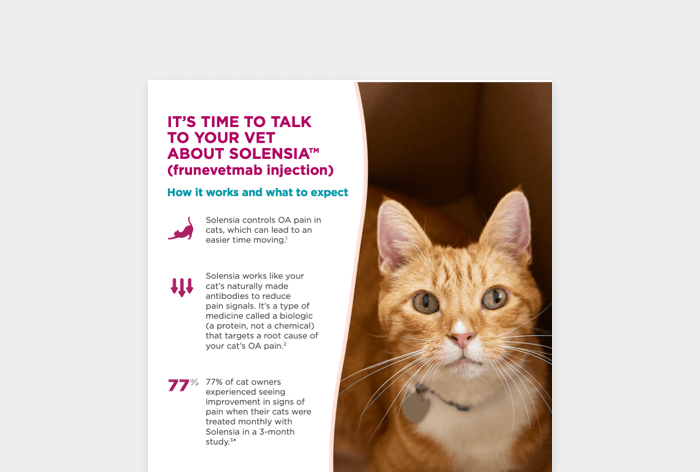


Pet Owner Brochure
What Is Cat OA Pain and Solensia?
Help cat owners understand both signs and treatment options for osteoarthritis pain.
Social Media
Ask Us About Solensia
Show pet owners how Solensia can help control OA pain for their cat.
Follow the customizable post instructions to share with your clients.
Resource Overview
Watch this short video and review the accompanying infographic to prepare for ongoing treatment discussions with pet owners.
Resources to Share With Pet Owners
How is Your Cat Progressing?
Use this attachment as a first touchpoint after initial treatment with Solensia.
Attach the provided image to an email or follow the customizable email instructions.
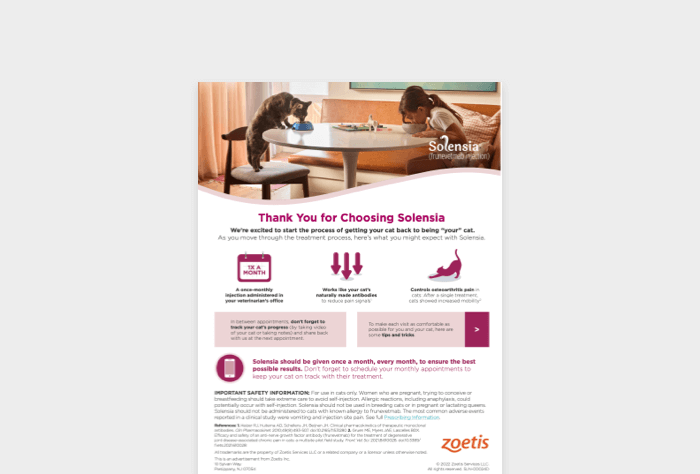


Thank You for Choosing Solensia
After 2-3 weeks, this email serves as an additional check-in to assess treatment.
Attach the provided image to an email or follow the customizable email instructions.
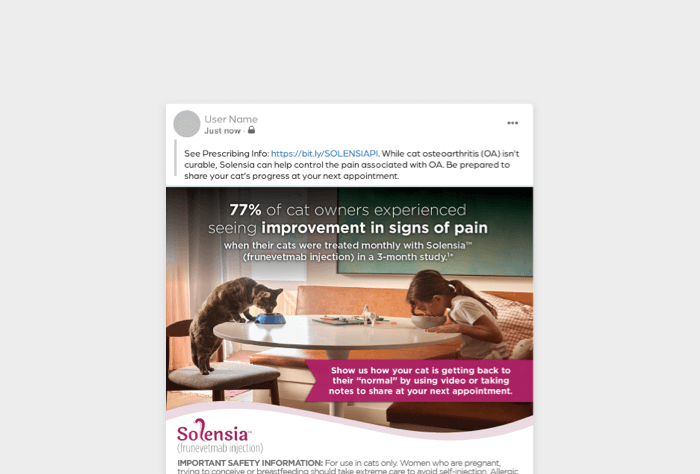


Social Media
Track Your Cat's Progress
Remind pet owners to track their cat’s treatment progress.
Follow the customizable post instructions to share reminders with your clients.
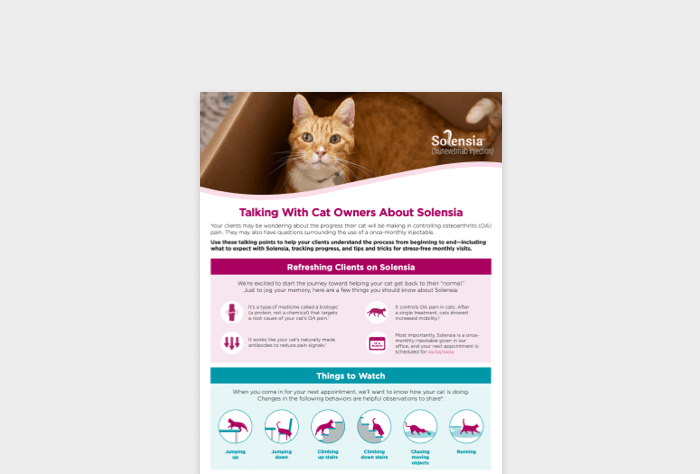


Talking Points
Talking With Cat Owners Between Visits
Connect with pet owners between visits to check in on their cat’s progress and confirm their next appointment.
Insert text here...
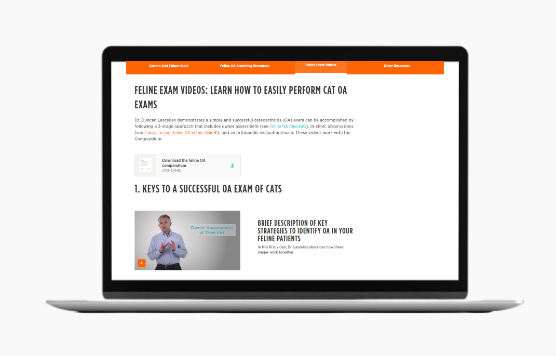
View tips for examining cats for OA
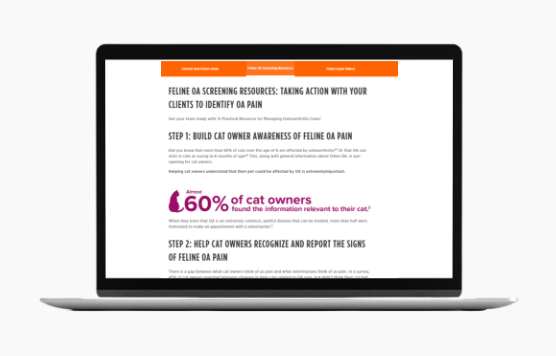
Find additional resources for OA pain
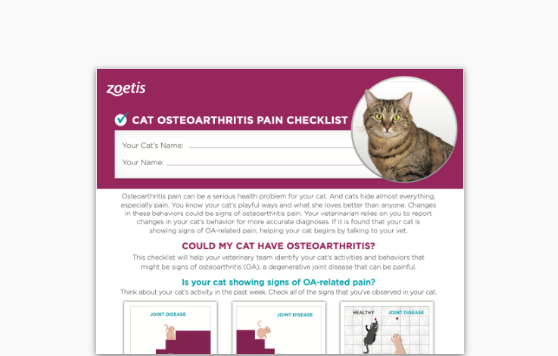
Get an OA checklist for your clients
Reference
- Gruen ME, Myers JAE, Lascelles BDX. Efficacy and safety of an anti-nerve growth factor antibody (frunevetmab) for the treatment of degenerative joint disease-associated chronic pain in cats: a multisite pilot field study. Front Vet Sci. 2021;8:610028. doi:19.3389/fvets.2021.610028.
SLN-00004R5
IMPORTANT SAFETY INFORMATION:
See full Prescribing Information. For use in cats only. Women who are pregnant, trying to conceive or breastfeeding should take extreme care to avoid self-injection. Hypersensitivity reactions, including anaphylaxis, could potentially occur with self-injection. Solensia should not be used in breeding cats or in pregnant or lactating queens. Solensia should not be administered to cats with known hypersensitivity to frunevetmab. The most common adverse events reported in a clinical study were vomiting and injection site pain.



